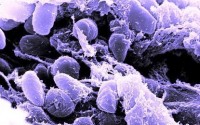Outbreak of Plague in the 20th century: historical and medico-political perspectives
- Date
- 22 Jan 2013
- Start time
- 7:30 PM
- Venue
- Tempest Anderson Hall
- Speaker
- Prof Kavita Sivaramakrishnan

Outbreak of Plague in the 20th century: historical and medico-political perspectives
Professor Kavita Sivaramakrishnan, Columbia University
Second lecture in a series of three on the theme of Global Health
With the support of York Medical Society
This talk will examine the historicizing of the plague and its changing representations as a public health hazard in tropical medicine and international health in India. Studies of the plague have tended to focus on its epidemic outbreaks and the violence, resistance and social tensions that it has generated in India in the colonial context. This work will attempt to bridge two conceptual categories, the changing understanding of epidemics and endemic disease in India’s landscape, and it will probe the changes and continuities in the transition from tropical medical expertise to international health agenda as reflected in the outbreaks and endemic silences of the plague. By tracing the Third Pandemic (early twentieth century) through to the re-emergence of plague outbreaks (1990s) in India I will explore the continuities and discontinuities in how disease and its environment get interpreted not only during epidemics but following outbreaks.
Report
This wide-ranging talk concentrated on the political aspects of Indian plague outbreaks in 1897, 1920 and 1994. Causing 8 million deaths, the first outbreak was controlled by the British authorities using huge quarantine camps. Seasonal, and returning annually, the disease was believed to be endemic and due to Indian conditions. After a brief respite, plague returned in 1920, a link to rodents had been established and the Indian authorities used DDT for control, which had other consequences. The disease was eradicated, and it was claimed that this was only possible after independence. The 1994 events were hugely controversial with various ideas on the cause. Government restrictions to avoid spread resulted in $1.7m in trade losses. Eradication was swift, and the official line was that it wasn’t plague at all, but a lower respiratory tract infection caused by squalid conditions in Surat, where the outbreak began. Even to the present day, the USA has suffered continuous plague outbreaks, attributed to displacement of rodents caused by the spread of housing, etc., into their natural habitat. Professor Sivaramakrishan warned against complacency at the apparently limited incidence world-wide: statistics are probably distorted by non-reporting.
Ken Hutson